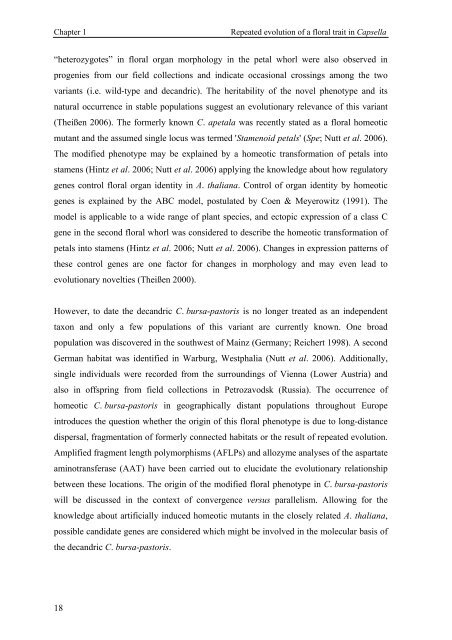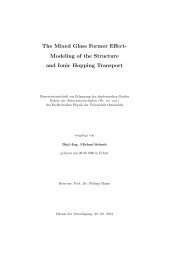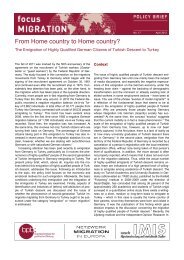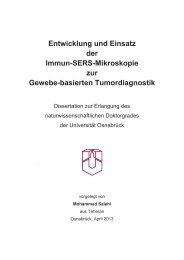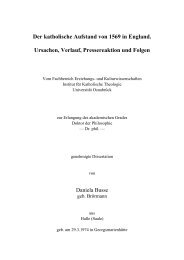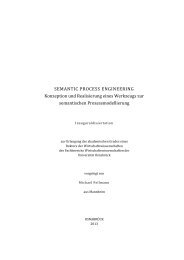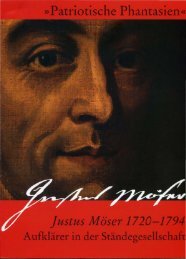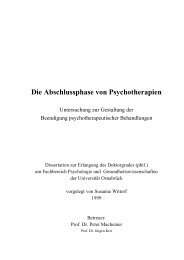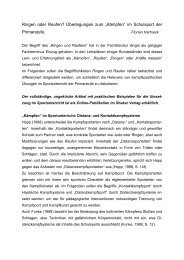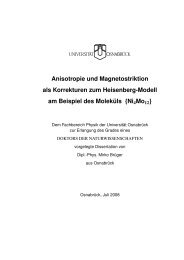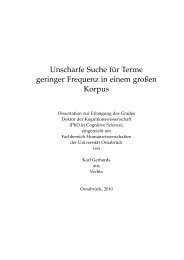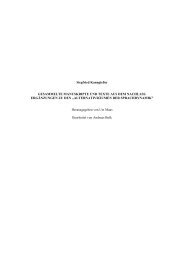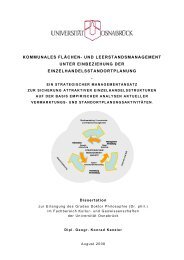'STAMENOID PETALS' IN A NATURAL HOMEOTIC VARIANT OF
'STAMENOID PETALS' IN A NATURAL HOMEOTIC VARIANT OF
'STAMENOID PETALS' IN A NATURAL HOMEOTIC VARIANT OF
Create successful ePaper yourself
Turn your PDF publications into a flip-book with our unique Google optimized e-Paper software.
Chapter 1 Repeated evolution of a floral trait in Capsella<br />
“heterozygotes” in floral organ morphology in the petal whorl were also observed in<br />
progenies from our field collections and indicate occasional crossings among the two<br />
variants (i.e. wild-type and decandric). The heritability of the novel phenotype and its<br />
natural occurrence in stable populations suggest an evolutionary relevance of this variant<br />
(Theißen 2006). The formerly known C. apetala was recently stated as a floral homeotic<br />
mutant and the assumed single locus was termed 'Stamenoid petals' (Spe; Nutt et al. 2006).<br />
The modified phenotype may be explained by a homeotic transformation of petals into<br />
stamens (Hintz et al. 2006; Nutt et al. 2006) applying the knowledge about how regulatory<br />
genes control floral organ identity in A. thaliana. Control of organ identity by homeotic<br />
genes is explained by the ABC model, postulated by Coen & Meyerowitz (1991). The<br />
model is applicable to a wide range of plant species, and ectopic expression of a class C<br />
gene in the second floral whorl was considered to describe the homeotic transformation of<br />
petals into stamens (Hintz et al. 2006; Nutt et al. 2006). Changes in expression patterns of<br />
these control genes are one factor for changes in morphology and may even lead to<br />
evolutionary novelties (Theißen 2000).<br />
However, to date the decandric C. bursa-pastoris is no longer treated as an independent<br />
taxon and only a few populations of this variant are currently known. One broad<br />
population was discovered in the southwest of Mainz (Germany; Reichert 1998). A second<br />
German habitat was identified in Warburg, Westphalia (Nutt et al. 2006). Additionally,<br />
single individuals were recorded from the surroundings of Vienna (Lower Austria) and<br />
also in offspring from field collections in Petrozavodsk (Russia). The occurrence of<br />
homeotic C. bursa-pastoris in geographically distant populations throughout Europe<br />
introduces the question whether the origin of this floral phenotype is due to long-distance<br />
dispersal, fragmentation of formerly connected habitats or the result of repeated evolution.<br />
Amplified fragment length polymorphisms (AFLPs) and allozyme analyses of the aspartate<br />
aminotransferase (AAT) have been carried out to elucidate the evolutionary relationship<br />
between these locations. The origin of the modified floral phenotype in C. bursa-pastoris<br />
will be discussed in the context of convergence versus parallelism. Allowing for the<br />
knowledge about artificially induced homeotic mutants in the closely related A. thaliana,<br />
possible candidate genes are considered which might be involved in the molecular basis of<br />
the decandric C. bursa-pastoris.<br />
18


